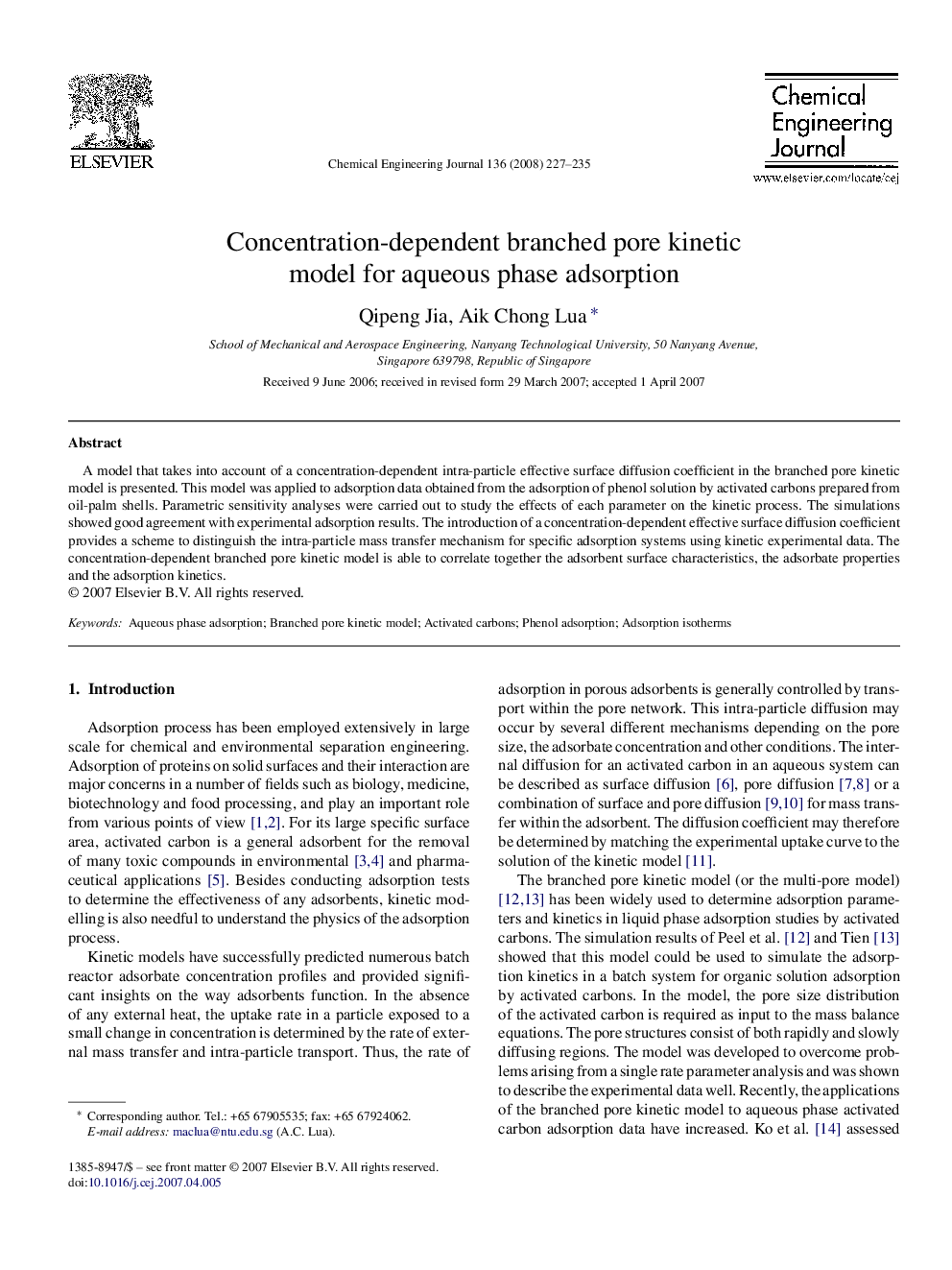| Article ID | Journal | Published Year | Pages | File Type |
|---|---|---|---|---|
| 153425 | Chemical Engineering Journal | 2008 | 9 Pages |
A model that takes into account of a concentration-dependent intra-particle effective surface diffusion coefficient in the branched pore kinetic model is presented. This model was applied to adsorption data obtained from the adsorption of phenol solution by activated carbons prepared from oil-palm shells. Parametric sensitivity analyses were carried out to study the effects of each parameter on the kinetic process. The simulations showed good agreement with experimental adsorption results. The introduction of a concentration-dependent effective surface diffusion coefficient provides a scheme to distinguish the intra-particle mass transfer mechanism for specific adsorption systems using kinetic experimental data. The concentration-dependent branched pore kinetic model is able to correlate together the adsorbent surface characteristics, the adsorbate properties and the adsorption kinetics.
